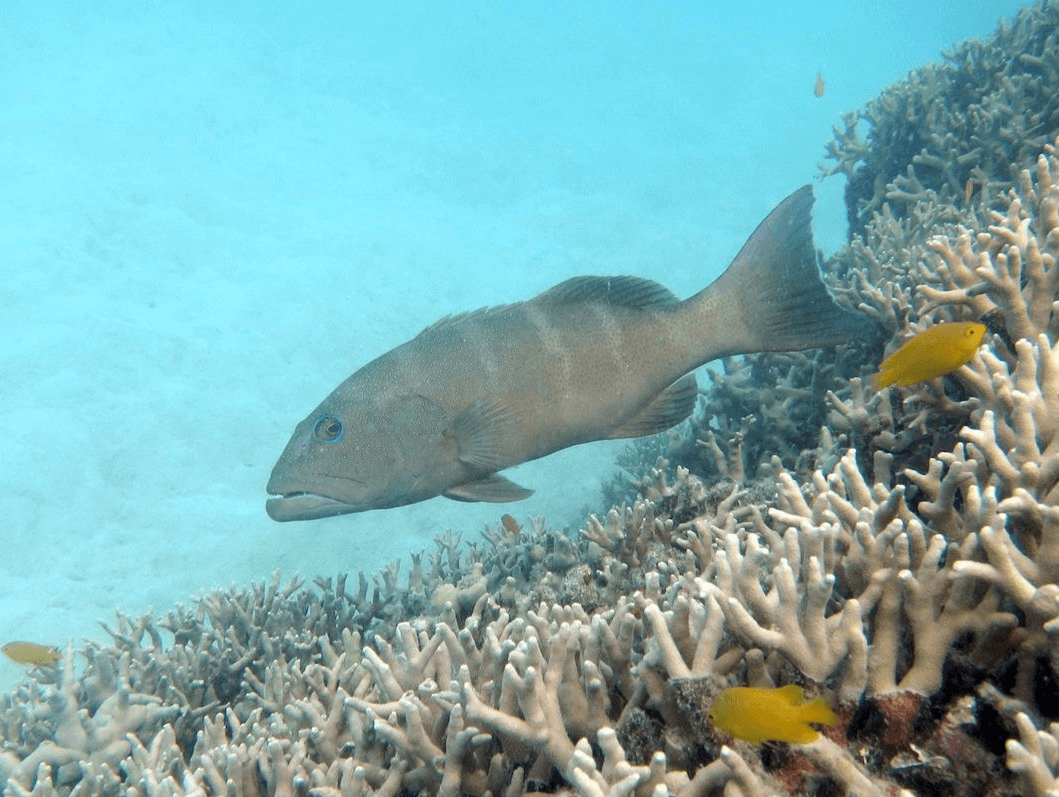
What happens to coral reef fish after they’re caught by fishers and released back into the water? In a new study, researchers followed released fish with underwater video cameras and found that the longer a fish was exposed to air, the longer it took to swim to the safety of the reef — likely making it vulnerable to being eaten by predators.
For a fish, being caught is stressful. The fish can be injured by a hook, become exhausted from exercise during the “fight,” and be air exposed when brought on board the boat for dehooking (and sometimes a photograph). Because fish breathe in water, air exposure suffocates a fish that might already be exhausted from “fighting” while on the line.
On Australia’s Great Barrier Reef (GBR), there are commercial and recreational fisheries that release large numbers of fish they catch because of regulations that restrict what species or size of fish can be kept or because of a conservation ethic (i.e., voluntarily releasing fish in order to help sustain their numbers). Fish are often released (alive) with good intentions in the hope and expectation that they will survive. However, in many fisheries around the globe, fish can die hours or days after being released or are eaten by predators shortly after release while in a weakened state.
At the Lizard Island Research Station in northern Australia, researchers from Canada, Australia, Sweden, and Norway studied the behavior of four common coral reef species after a simulated catch-and-release fishing event: common coral trout, spangled emperor, yellow-tailed emperor, and Spanish flag snapper. The fish were chased around by hand for one minute in a bucket to simulate exhaustive exercise during a “fight” on the hook-and-line. Then fish were exposed to air for different durations: 0, 1, or 5 minutes, designed to mimic handling practices that range from good (no air exposure) to poor (5 minutes). Fish were released into the water, and two divers followed the fish with underwater cameras to record the first few minutes of post-release behavior for each animal.
Video showing behavior of fish exposed to different treatments in the study. Video courtesy Graham Raby.
Fish that were air exposed for fives minutes were lethargic; they lingered near the boat longer, took longer to swim to the sea floor, and took longer to swim to the shelter of the reef. The behavior of the fish that were air exposed for longer suggested they would be extremely vulnerable if predators were nearby. We know from previous research that predators, especially sharks, marine mammals, and seabirds, have learned to follow fishing vessels for an easy meal, snapping up released fish that are weak and tired.
Some groups (such as KEEPEMWET) promote the use of scientific knowledge to develop and refine best practices designed to improve the welfare and survival of fish that are caught and released. This study provides some of the first scientific evidence using underwater video that air exposure of caught-and-released fish can impair their behavior, emphasizing the need to minimize air exposure during fisheries interactions.
These findings are described in the article entitled Swim for it: Effects of simulated fisheries capture on the post-release behaviour of four Great Barrier Reef fishes, recently published in the journal Fisheries Research.









